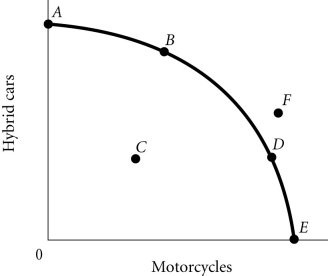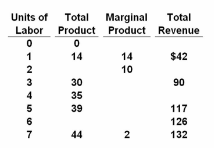Refer to the information provided in Figure 2.4 below to answer the question(s) that follow. Figure 2.4Refer to Figure 2.4. The economy moves from Point A to Point D. This could be explained by
Figure 2.4Refer to Figure 2.4. The economy moves from Point A to Point D. This could be explained by
A. an increase in economic growth.
B. a change in society's preferences for motorcycles versus hybrid cars.
C. a reduction in unemployment.
D. an improvement in technology.
Answer: B
You might also like to view...
If the inverse demand curve a monopoly faces is p = 100 - 2Q, MC is constant at 16, and the government imposes an $8 per unit specific tax on the monopoly, the deadweight loss due to both the monopoly and the tax is
A) $529. B) $1332. C) $1764. D) $441.
A government action that can help correct positive externalities is
A) a tax on producers of the good that provides external benefits. B) a subsidy to consumers of the good that provides external benefits. C) an effluent fee charged to producers of the good that provides external benefits. D) regulations aimed at reduced production by sellers of the good that provides external benefits.
For the monopolistic competitor, which of the following is INCORRECT?
A) Because the firm is not a perfect competitor, its demand curve slopes downward. B) The marginal revenue curve is downward sloping and lies below the demand curve. C) The profit-maximizing rate of output arises at the point at which the marginal cost curve intersects the marginal revenue curve. D) If the firm in a monopolistically competitive industry were making economic losses, new firms will enter the industry.
Refer to the given data. What is the marginal product of the sixth worker?

Answer the question on the basis of the following information for Manfred's Shoe Shine Parlor. Assume Manfred hires labor, its only variable input, under purely competitive conditions. Shoe shines are also sold competitively.
A. 2 units.
B. 3 units.
C. 4 units.
D. 5 units.